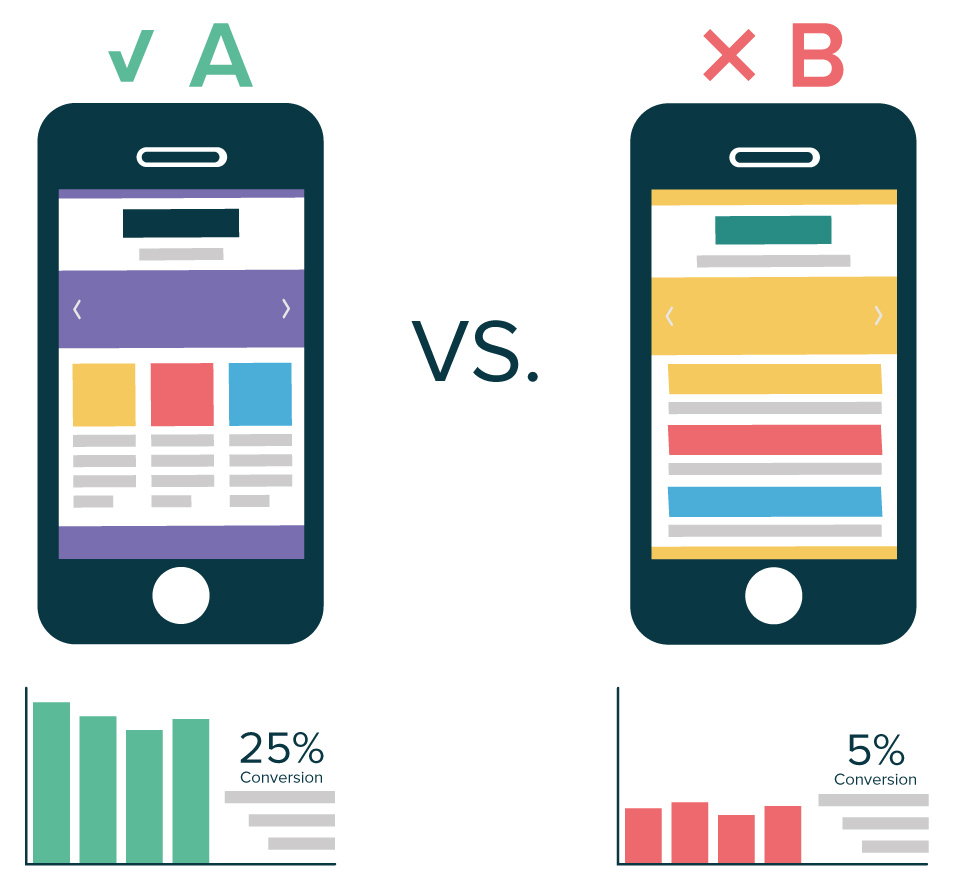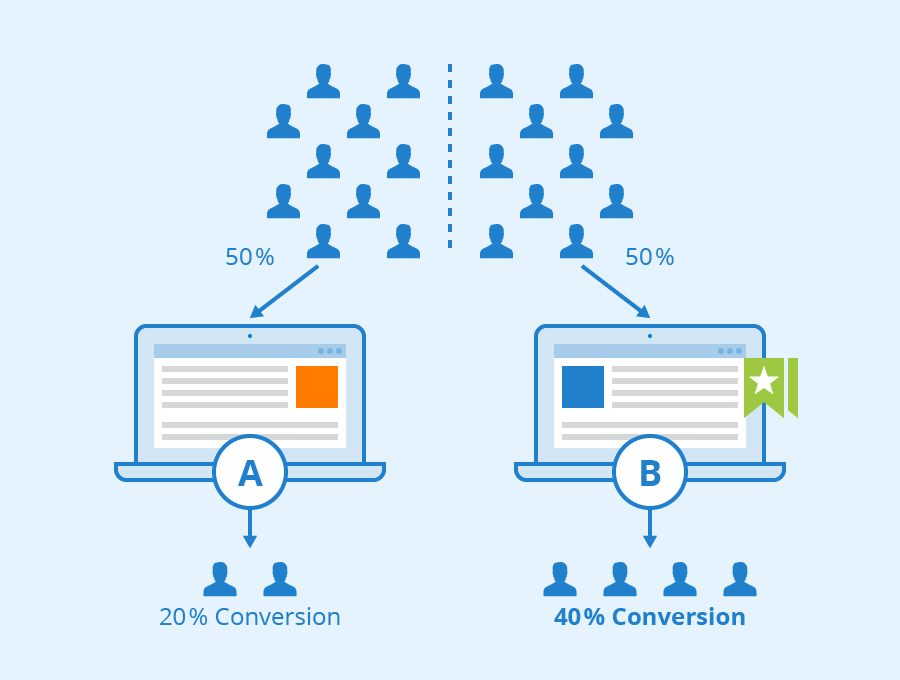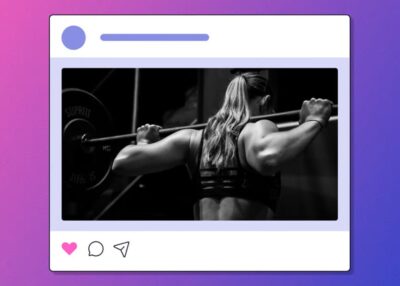The Best A/B Testing Guide for Event Marketers
A/B testing is the method used to compare two different versions of a web page or campaign to evaluate which one performs better. When done right, it can give the best possible value to your audience—creating stronger trust between the two of you.
In promoting events, you need to reach as many qualified audiences as possible to drive attendance and improve user engagement. However, pulling audiences in can be difficult to do when their breadth is too wide and your costs run too high.
To reduce costs and optimize events, you need to utilize A/B testing for digital advertisements and marketing campaign needs. The ease of analysis offered by this procedure will help you validate optimizations in a way that is most cost-effective for your overall planning and execution.
Your event strategy should include A/B testing techniques that help improve the content, reach ad goals, and garner big campaign wins all the time. With these tests in place, you can optimize almost any form of content, from ad content to email marketing—the possibilities are endless!
Get better at event promotion when you use optimization techniques through this guide to A/B testing:
Where to use A/B testing for event promotions
For overall efficiency in your promotional materials, A/B testing must be present in all aspects of your campaigns. By doing so, you ensure each part of the promotional campaign is well-optimized for success.
As such, here are the times when you should be practicing A/B testing for your promotional campaigns:
Posting on social media
Campaigns on wide-reaching platforms like Facebook, Instagram, TikTok, Twitter, and LinkedIn will greatly benefit from A/B testing best practices.
Creating search ads
You can run comprehensive tests for your activity’s search ads, which will surface all over the Google Display Network.
Composing email marketing content
You can easily use split tests on email marketing content, like your email body, headline, CTA, and more.
Launching event landing pages
Create effective landing pages when you split test sign-up buttons, ticket buying information, and other related promotional content.
Getting to know your target audience groups
Get to know your audience better by targeting them with tests and comparing their responses to different versions of your event promotion.
Sending out SMS blasts
You can even use split testing on surprising things like SMS blasts to improve your activity’s attendance and engagement.
Getting started with the A/B testing basics

Now that you know the diverse applications of this crucial digital marketing technique, let’s quickly go over the basic terms before you start using A/B testing for your upcoming events:
1. Hypothesis: This refers to the question you’d want to have answered by the end of this procedure. Refer to past data from previous tests to identify what needs to be improved through your current process.
2. Variables: These include the “control,” the marketing elements that you currently have running as part of your campaign, and the “challenger,” the marketing elements that you want to test against your control to see which idea works better.
3. Test duration: This refers to the length of time for which you conduct your test. You’ll learn more about how to calculate your test duration as you continue reading this guide.
Now that you’ve understood these terms, you’re now ready to learn how to conduct A/B testing!
How to conduct A/B testing
Now that you know the basics of this complex digital marketing technique, it’s time to know how to do it. Here are the five steps you need to follow when conducting an A/B test for your event marketing campaign optimization.
Step #1: Define your goals
First off, you need to identify the reason why you’re running an A/B test for your activity’s promotion. With a clear goal in mind, you’ll get an idea of what good quality content should look like and would get the attention of your intended audience.
After all, without a specific goal in mind for your campaign, your promotion procedure ends up directionless in the long run. This means that you’ll run the risk of wasting resources on your tests - the exact opposite of what the test is made for in the first place.
Step #2: Determine your variables
Now that you know your goal for this experiment, it’s time to determine the variables you want to utilize for this comparison. As much as possible, choose small and similar variables so that you can get clearer results from this modification process.
You can start by identifying a control variable and a challenger variable for your initial experiment. Variables may include things like an event logo’s color or placement on a landing page, or a hook line for an SMS text blast.
Step #3: Outline your testing parameters
While you set up your goals and variables for your experiment, you also have to outline your testing parameters for the upcoming comparison. The comprehensiveness of this outline will depend on the magnitude and scope of what you’re testing in your event promotions and campaign executions.
Generally, your outline of parameters should include critical elements like:
- Audience sample size,
- Testing significance,
- Top variables like your control and challenger
These elements will help make your process smoother as you run those tests on your chosen campaign, giving you better results once the process is done. So before undergoing your upcoming testing phase, keep in mind these essential parameters.
Additionally, the following A/B testing tools will help you properly analyze your parameters:
- Apptimize. With its cross-platform split capabilities, this tool is a must-have if you’re working on mobile campaigns during your events.
- Google Optimize. This tool lets you see how effective, or ineffective, certain event ideas are without actually having to try them in real time, saving you money and other wasted resources.
- Intellimize. Intellimize is ideal for any event marketer who’s looking to automate tests and reports with machine-learning algorithms on websites or landing pages.
- Optimizely. This company offers unique products and services such as Optimization-as-a-Service, free test Rollouts, and a Digital Experience Platform that allows you to optimize better event experiences for your customers.
Step #4: Set your testing duration and budget accordingly
A/B testing is a complex process that only works when done at the right time with the right budget. After all, the right duration allows you to get a clear and substantial sample size to test on, and the right budget will lead you to these conclusions.
To find the ideal testing process, define a proxy duration for event preparation and the attendee sample size.
Once you’re done with these placeholder variables, identify a placeholder budget and do your test. Then when the placeholder test is done, and you need more time and budget to get statistically significant test results, adjust incrementally until you get what you need.
Step #5: Note down observations and adjust as needed
As each A/B testing process is done, take down your observations during the experimentation procedure. Note down what works, what doesn’t, and what other improvements can be made to better create a more memorable event for your audiences.
Once you identify what works best for your event, you can optimize accordingly and then embark on your testing journey all over again until you get the ideal results from the ongoing simulations.
Conclusion
A comprehensive guide to A/B testing is what spells the difference between the success and failure of your event.
With so much to consider in A/B testing, missing out on it may cause your event promotion to be left unnoticed by the intended audience. As such, remember to use this guide in conjunction with your own activities to ensure better conversions and results come out of your next campaign.
Get more tried-and-tested marketing tips today when you check out the Purple Pass blog today!

Author: Gary Viray
Gary Viray is the founder and CEO of Propelrr, a data-informed digital marketing agency operating both in the United States and the Philippines.Gary’s insights are founded on decades worth of experience in various digital marketing principles, with particular expertise in conversion rate optimization (CRO), and marketing experimentation.





